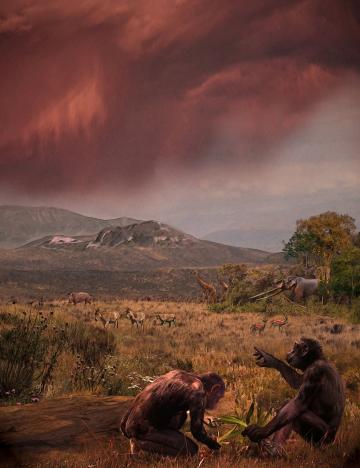
Scientists discover ape remains in Europe brining to question the human origin

Scientists has discovered the remains of an ape like creatures believed to have lived over 7.2 million years ago in Greece and Bulgaria, bringing into question whether really human evolution did begin in Africa.
Discoveries of a lower jawbone and an isolated tooth, led to the discovery of the fossil, Graecopithecus freybergi , which may be the oldest-known member of the human lineage that began after an evolutionary split from the line that led to chimpanzees, our closest cousins, reports Reuters.
Graecopithecus wss placed in the human lineage hominins after the dental root development showed possession of human characteristics that have never been seen in chimps and their ancestors.
Before the discovery the oldest known hominin was Sahelanthropus, which lived 6-7 million years ago in Chad.
The discovery means that Eastern and Southeastern Europe may have given rise to the human lineage opposed to Africa according to researchers.
“Our species evolved in Africa. Our lineage may not have,” said paleoanthropologist Madelaine Böhme of Germany’s University of Tübingen, adding that the findings “may change radically our understanding of early human/hominin origin.”
“We know that many of the mammals of Africa did in fact originate in Eurasia and dispersed into Africa at around the time Graecopithecus lived,” said University of Toronto paleoanthropologist David Begun, adding “So why not Graecopithecus as well?”
Graecopithecus is a mysterious species because its fossils are so sparse. It was roughly the size of a female chimp and dwelled in a relatively dry mixed woodland-grassland environment, similar to today’s African savanna, alongside antelopes, giraffes, rhinos, elephants, hyenas and warthogs.






